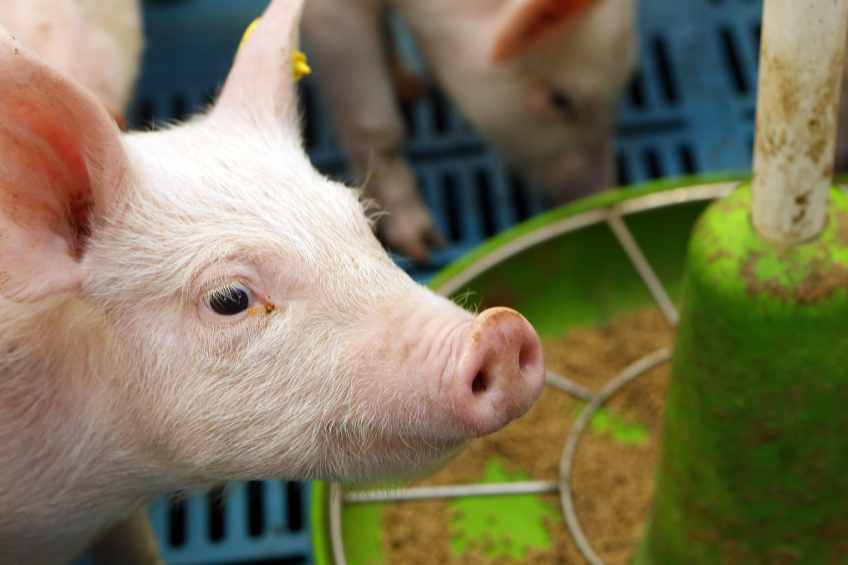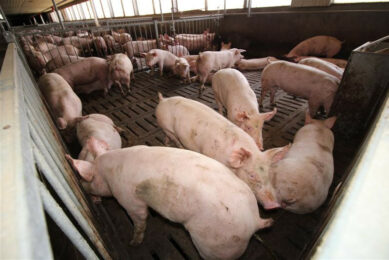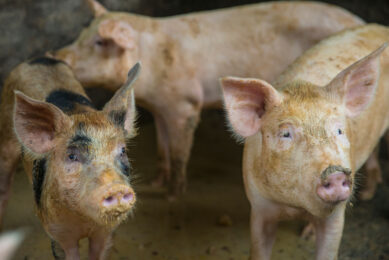How butyrate can help to combat PED

Butyrate may be a valuable tool in the fight against the dramatic effects of PED on the infected pig.
Porcine Epidemic Diarrhoea (PED) has been affecting pig production worldwide. Next to strict ?biosecurity measures, producers can reduce the effects of the virus by strengthening the animal’s defence. Trials with butyrate in pig feed show promising results.
Over the last two years, a highly virulent strain of the PED virus has been associated with devastating outbreaks in the Americas and in Asia, and recent reports of PED cases in Ukraine have raised concerns about the threat of the highly virulent Asian-American strain in Europe. Pigs are the only known hosts of the PED virus. The virus is shed in the faeces and is usually transmitted orally. Most commonly, the introduction of infected pigs into susceptible farms causes outbreaks of PED within four to five days but the virus may also be introduced into a susceptible herd through contaminated personnel, equipment and other fomites. Clinical signs may vary widely, but all include loss of appetite, diarrhoea and hence dehydration. Mortality in the young infected piglets approaches 100%.
How to deal with the disease
Aside from strict biosecurity measures to avoid introduction of the virus and, in case of infection, supportive therapy to prevent dehydration (electrolytes, warmth) producers are looking for other options to strengthen the animal’s defence and to help the pigs dealing with the negative consequences from the disease. Thanks to its specific effects on enteric development and intestinal health, butyrate is a suitable candidate. Several studies have indicated that besides providing epithelial cells with energy, butyrate markedly enhances proliferation, differentiation and maturation of enterocytes in the small intestine and improves colonic barrier function. The protective and recovering effect of butyrate has been demonstrated in in vivo challenge trials with micro-organisms (E. coli in piglets and C. perfringens in poultry) damaging the intestinal barrier like PED virus does.
More offspring and heavier piglets
Very recent research at the University of Taiwan looked into survival and performance of PED-infected newborn piglets. The trials were conducted on commercial farms, under supervision of the University of Taipei (Taiwan). Twenty sows that were demonstrated to be PCR-positive for PEDv (rectal swab) and their litters, were selected for the trial. The sows were divided into two treatment groups: sows receiving no additional dietary supplementation (control group) and sows receiving 2 kg/tonne of butyrate supplement (Adimix Precision) during the last three weeks of gestation and during lactation (butyrate group). The litters from these sows were also tested by PCR and a litter was considered PEDv+ if at least one piglet out of two tested was PEDv+. Piglets from the control sows received no additional treatment and piglets from the butyrate sows received 2 kg/tonne butyrate supplement in their liquid creep feed one week before and one week after weaning (weaning at day 21; Figure 1). The average weight of the sows at the start of the trial was very comparable. The results indicate that sows receiving the butyrate supplement during gestation and lactation were heavier at farrowing and at weaning and produced more viable offspring than the control group. On average 34% more live piglets were noted in the butyrate supplemented group (Figure 2). Piglets from the butyrate group were statistically heavier from day 14 onwards, and at the same time PED-associated mortality measured at weaning dropped substantially. Butyrate supplementation resulted in a reduction of piglet mortality from 81% to only 54%. These results demonstrate that, due to butyrate’s effect on intestinal tissue health and healing, it helps PED affected piglets to cope better with the infection.
High quality coating is necessary
Since the virus damages intestinal cells in the small intestine and in the colon, it is crucial that butyrate is able to reach these areas. Butyrate can only arrive in the lower luminal parts of the intestinal tract when it is protected from metabolisation in the stomach and is gradually released in the distal regions of the intestine. The most efficient way to achieve this is by administering a protected butyrate with precision delivery capacity. This is also done with the product used in the trials in this article.
Different coated butyrate products are available for use in animal production. They come however in many different shapes and forms. One should make a clear distinction between high quality coatings that result in optimal protection and precision delivery of butyrate as opposed to coatings that are solely applied to cover the distinct butyrate smell.
In recent research done at the University of Illinois the importance of a high quality coating was demonstrated. Weanling pigs were randomly allotted to three dietary treatments (six replicate pigs per treatment), namely a control group (no butyrate supplementation), a group receiving 4 kg/tonne of a smell coated butyrate (50% Na-butyrate) and a group receiving 4 kg/tonne of a precision delivery butyrate (butyrate supplement, Adimix Precision, 30% Na-butyrate). Pigs were euthanised and the concentration of butyrate was analysed in samples from different parts of the intestinal tract. Weanling pigs fed the butyrate supplementation had significantly higher (P<0.05) concentrations of butyrate in the jejunum and ileum in comparison with both the control group and the group fed the smell coated butyrate (Figure 3). It could therefore be concluded that administration of high quality protected butyrate, in spite of lower percentage of Na-butyrate (30%), was effective in delivering butyrate to the lower intestinal tract of pigs, whereas supplementation of the more concentrated (50%) but less protected butyrate (smell coated) was not.
Tool
In conclusion, thanks to its specific properties on intestinal health, butyrate may be a valuable tool in the fight against the dramatic effects of PED on the infected pig. However, to unlock the full potential of butyrate, it is crucial to assure its delivery in the right area. When applying protected butyrates in animal production, it is of great importance to distinguish between different types of coated products, as their in vivo efficacy will greatly differ due to their different delivery profile.
Log in or register to view more articles from the Pig Progress magazines.











